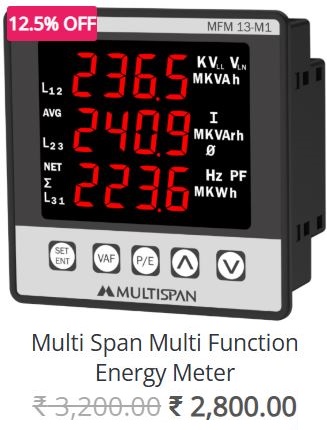In the fast-paced world of manufacturing, optimizing production processes is critical to staying competitive and meeting customer demands. Companies are continually seeking ways to streamline operations, reduce costs, and improve product quality. One of the most effective methods to achieve these goals is One-Piece Flow, a key concept in lean manufacturing.
One-Piece Flow is all about creating a continuous flow of production by moving individual items through each stage of the process, one at a time, instead of in large batches. This method helps eliminate waste, reduce lead times, and significantly improve overall efficiency. But how does One-Piece Flow work, and why is it so effective at improving manufacturing operations? Let’s explore the concept in more detail.
What is One-Piece Flow?
One-Piece Flow is a production technique where a single unit is produced, processed, and moved through each step of the manufacturing process before the next unit is started. Unlike traditional batch production, where large groups of items are made together and then moved through the process in bulk, One-Piece Flow focuses on optimizing the movement and processing of one item at a time.
This approach ensures that products are worked on continuously without unnecessary delays, thus eliminating much of the waiting time and idle time that typically occur in batch production. It’s a core principle in lean manufacturing that emphasizes efficiency, waste reduction, and continuous improvement.
Key Benefits of One-Piece Flow
1. Elimination of Waste
At the heart of lean manufacturing is the elimination of waste. Waste comes in many forms, such as time, materials, motion, and energy. One-Piece Flow addresses several types of waste:
-
Waiting Waste: In batch production, products often wait between stages of the manufacturing process. One-Piece Flow reduces waiting time by ensuring that products are continuously worked on, with no idle time between steps.
-
Overproduction Waste: Producing large batches of items leads to overproduction, which often results in excess inventory. One-Piece Flow minimizes overproduction by producing only what is needed at any given time, reducing inventory costs and the risk of unsold or obsolete products.
-
Motion Waste: Moving large batches of products from one station to another can cause unnecessary motion and increase handling time. One-Piece Flow reduces motion waste by ensuring that each product is directly worked on in sequence, minimizing unnecessary movement.
-
Defect Waste: In batch production, defects may go unnoticed until the entire batch is completed, leading to significant rework. In One-Piece Flow, defects are identified and corrected immediately, reducing the likelihood of defects being passed downstream.
By reducing all these types of waste, One-Piece Flow helps manufacturers operate more efficiently and cost-effectively.
2. Improved Efficiency
One of the primary advantages of One-Piece Flow is the improvement in overall efficiency. Since products move continuously through each step of the process, lead times are significantly reduced. Instead of waiting for a batch to be completed and then moving it through the process in bulk, each product is processed individually, with minimal delays.
This streamlined flow helps prevent bottlenecks in the production process, as workers can focus on completing one task at a time. Additionally, by limiting work-in-progress (WIP) inventory, employees can focus on the tasks at hand without the distraction of managing large quantities of unfinished products.
With fewer interruptions and faster production cycles, manufacturers can meet demand more efficiently, which is particularly valuable in industries that require quick turnaround times or have fluctuating customer needs.
3. Higher Product Quality
Product quality is enhanced with One-Piece Flow because each item is continuously inspected at every stage of production. In batch production, defects might not be noticed until a batch is completed, potentially leading to costly rework or scrapping of large quantities of products. In contrast, with One-Piece Flow, any issues that arise can be immediately addressed, ensuring that defects are caught early in the process.
This continuous inspection reduces the likelihood of defects being passed down the production line, leading to a higher quality end product. Moreover, because products are produced one at a time, operators can focus more closely on each item, contributing to better craftsmanship and attention to detail.
4. Lower Inventory Costs
One-Piece Flow leads to a dramatic reduction in inventory costs. In batch production, companies often produce large quantities of products before they are moved to the next stage, leading to inventory buildup. Holding excess inventory ties up valuable space and resources, and it may also result in waste if the items become obsolete or are not sold in time.
By producing products one at a time and moving them through the system quickly, One-Piece Flow reduces the need for excess inventory. Companies can produce exactly what is needed, when it is needed, which reduces storage costs and ensures that inventory is fresh and aligned with customer demand.
5. Enhanced Flexibility and Responsiveness
With One-Piece Flow, manufacturers become more flexible and responsive to changes in customer demand. Since each product is processed individually, production can be easily adjusted to accommodate changes in order size or product specifications without the delays or inefficiencies associated with batch production.
This flexibility allows manufacturers to respond more quickly to market fluctuations, customer preferences, and unexpected demands, making them more agile in a competitive environment.
How to Implement One-Piece Flow in Your Production Process
Implementing One-Piece Flow in your production process requires careful planning and some fundamental changes to your operations. Here are the essential steps for getting started:
1. Map Your Current Process
Start by mapping out your existing production process. Identify each step in the process and determine where delays or bottlenecks occur. Understanding the flow of materials, information, and products will help you identify areas where One-Piece Flow can be most beneficial.
2. Redesign Your Production Layout
One of the key components of successful One-Piece Flow is a well-organized production layout. Reorganize your workstations to minimize movement and facilitate the smooth flow of products from one step to the next. Consider arranging workstations in a straight line or U-shaped layout to reduce handling time and improve accessibility.
3. Balance the Workload
To achieve optimal flow, balance the workload across all workstations. No single station should be overloaded with work while others remain idle. By balancing the work, each station can operate at a consistent pace, and the flow will remain steady.
4. Train Your Workforce
Your employees need to be trained on the principles of One-Piece Flow and their role in the process. They should understand how the system works, how to identify problems, and how to ensure continuous flow. In addition, they should be empowered to stop the process if they detect a problem, ensuring that quality is maintained throughout production.
5. Monitor and Refine the Process
Once One-Piece Flow is implemented, regularly monitor the process to identify any inefficiencies or areas for improvement. Continuously seek feedback from employees and make adjustments as necessary to optimize the flow.















